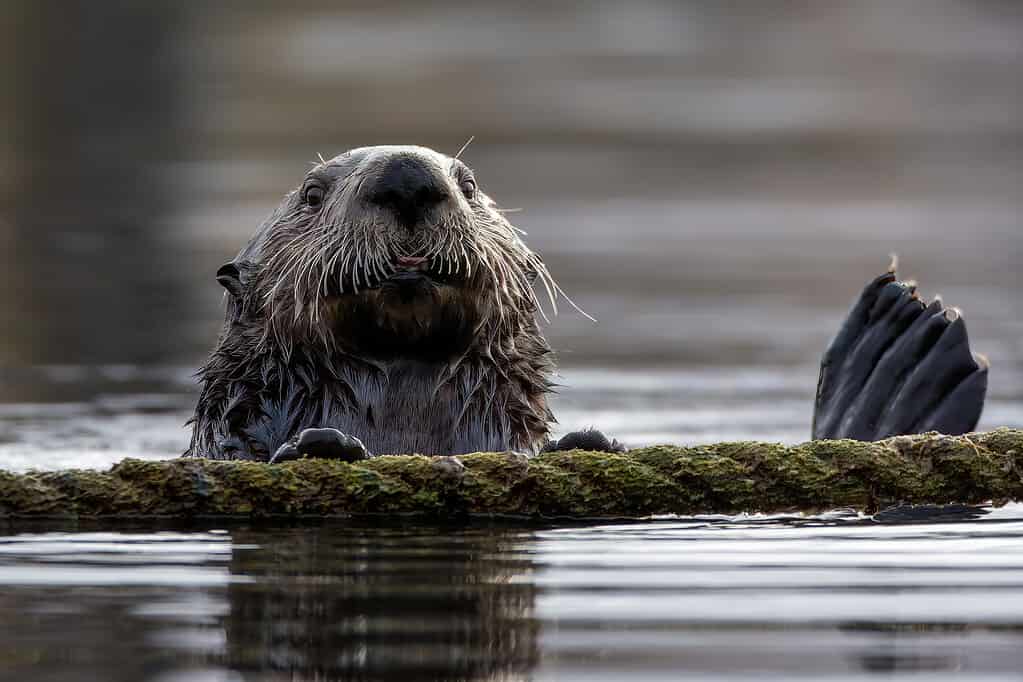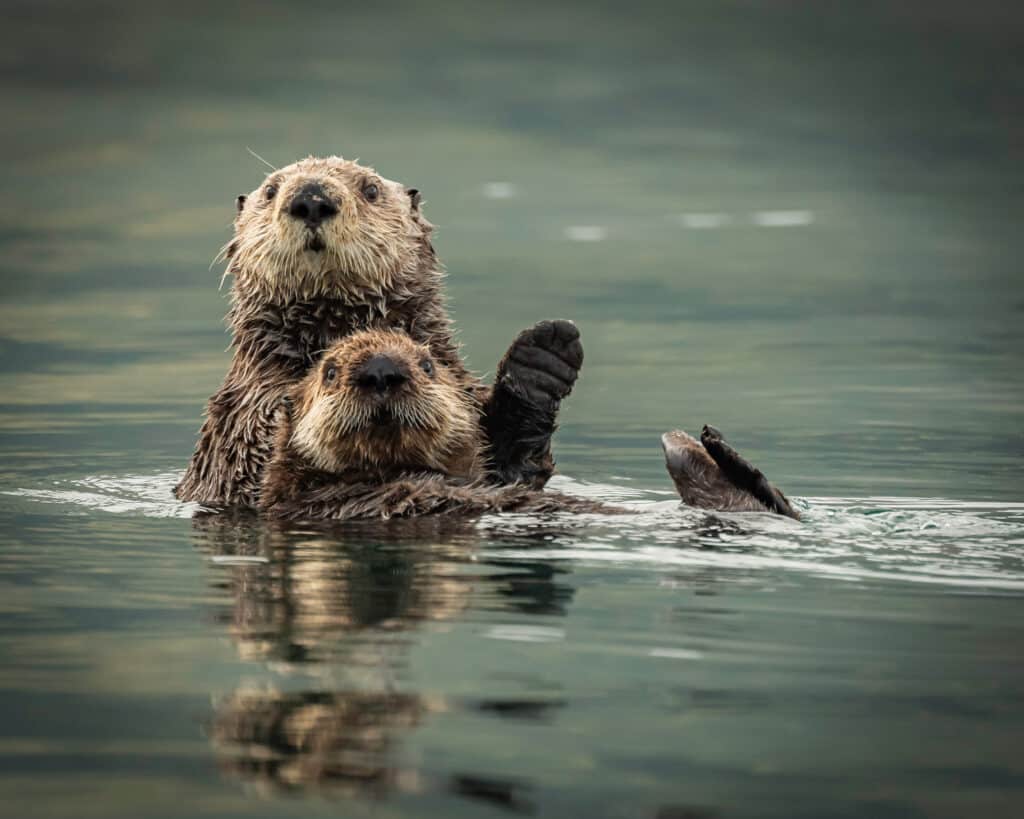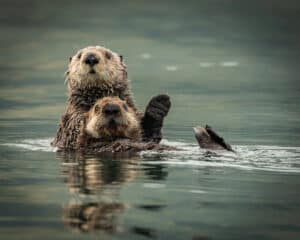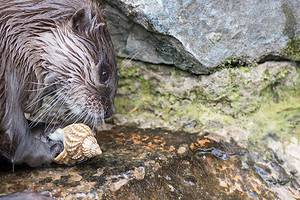There are three distinct subspecies of sea otter. All of these species are at different population levels:
- Northern sea otter (Enhydra lutris kenyoni): This subspecies is currently Threatened. Their population was extremely low. However, they have rebounded since the implementation of hunting in the 20th century. Today, they’re mostly threatened by oil spills and entanglement with fishing gear.
- Southern sea otter (Enhydra lutris nereis): This subspecies is also Threatened. Their population has also been rebounding, but they face threats similar to those of the northern sea otter. The Southern sea otter is also known as the California sea otter.
- Asian sea otter (Enhydra lutris lutris): This subspecies is listed as Endangered and is the rarest subspecies of sea otter. There are only around 2,000 individuals left in the wild. They continue to be threatened by habitat loss, pollution, poaching, and incidents with fishing gear.
Technically, the Asian sea otter is the only subspecies currently listed as endangered. However, the other two are threatened, meaning their populations are still below under expert’s preferences.
How Did Sea Otters Become Endangered?

Sea otters still face several threats today, though it is currently illegal to hunt them.
©Kyle Moon/ via Getty Images
While many factors impact sea otters, there are two main factors leading to population loss: overhunting and habitat loss.
Overhunting
The main reason sea otters are threatened and endangered today is due to overhunting. During the 18th to 19th centuries, hunters heavily pursued sea otters for their thick fur. This pursuit and the fur trade caused a dramatic decrease in their population. In the early 20th century, this overhunting led to some species nearly being extinct.
Hunting largely became a problem in the 19th century with the arrival of better hunting techniques. Shooting and effective traps could wipe out entire colonies in record time. There weren’t any regulations at the time, leading to endless decline.
Habitat Loss
Industrial waste, oil spills, agricultural runoff, and urbanization have led to declining sea otter populations. These problems contaminate the ocean, poisoning the sea otters themselves or their prey.
Oil spills are particularly harmful, as they severely damage the otter’s fur and strip them of their insulation. Without proper fur, the otters cannot stay warm in colder weather.
Coastal development has also led to a decline in kelp forests and other ecosystems. Over time, otters have had a harder and harder time finding somewhere to live and food to eat. This problem has led to a slower rebound after the implantation of hunting regulations.
Disease
Sea otters are also susceptible to many diseases. Many of these are “natural,” meaning they would occur with or without humans. However, coastal development encourages some disease activity. For instance, toxoplasmosis comes from cats, and contamination of waterways due to pet cats can lead to local sea otters becoming sick. Researchers identified several stranded infected sea otters in California in 2023 and determined they died from exposure to toxoplasmosis.
Some diseases can also be transmitted to humans. Of course, they also impact local sea otter populations. Sometimes, diseases can have significant mortality rates.
Entanglement
Another common threat to sea otters is entanglement with fishing gear. While hunting sea otters is illegal, they can be “bycatch” for fishermen targeting other species despite their intelligence. They may become accidentally tangled in fishing gear, leading to injury and even death.
Sadly, there aren’t many laws to prevent this. However, bans are in place on fishing methods with a high bycatch rate, and newer, safer fishing methods are in development.
How is the Sea Otter Population Being Protected?

Sea otters do not reproduce very quickly, which limits how fast their population can rebound.
©Laura Hedien/Shutterstock.com
Several different laws worldwide currently protect the sea otter population, and there are also wider habitat conservation efforts.
The hunting of sea otters has been banned throughout much of the world, where they are native. Otters are also protected by the Endangered Species Act, which prohibits hunting threatened and endangered sea otters. The hunting of sea otters was also banned commercially in a separate act from the Endangered Species Act, so they’re “double” protected.
Marine protected areas (MPAs) are being established around sea otters and other threatened marine life. These areas restrict human activities like fishing and building houses, allowing sea otters to find homes and food. To date, the United States features MPAs in 26% of its waters.
Restoring kelp forests is also underway, which can help the sea otter population. Pollution and overfishing have led to the decline of these underwater forests. We’re also improving at preventing and cleaning up after oil spills, which helps the whole marine ecosystem.
While sea otter populations have been improving in most cases over the last few decades, many experts are still tracking their populations and identifying further threats. Conservation strategies are still in place, as none of the subspecies are out of the woods yet. Disease research is one of the newer ways humans try to protect sea otters.
While disease doesn’t have as big of an impact as hunting and habitat loss, it can lead to the weakening of colonies and slow down population growth.
The photo featured at the top of this post is © nvphoto/Shutterstock.com
Thank you for reading! Have some feedback for us? Contact the AZ Animals editorial team.






